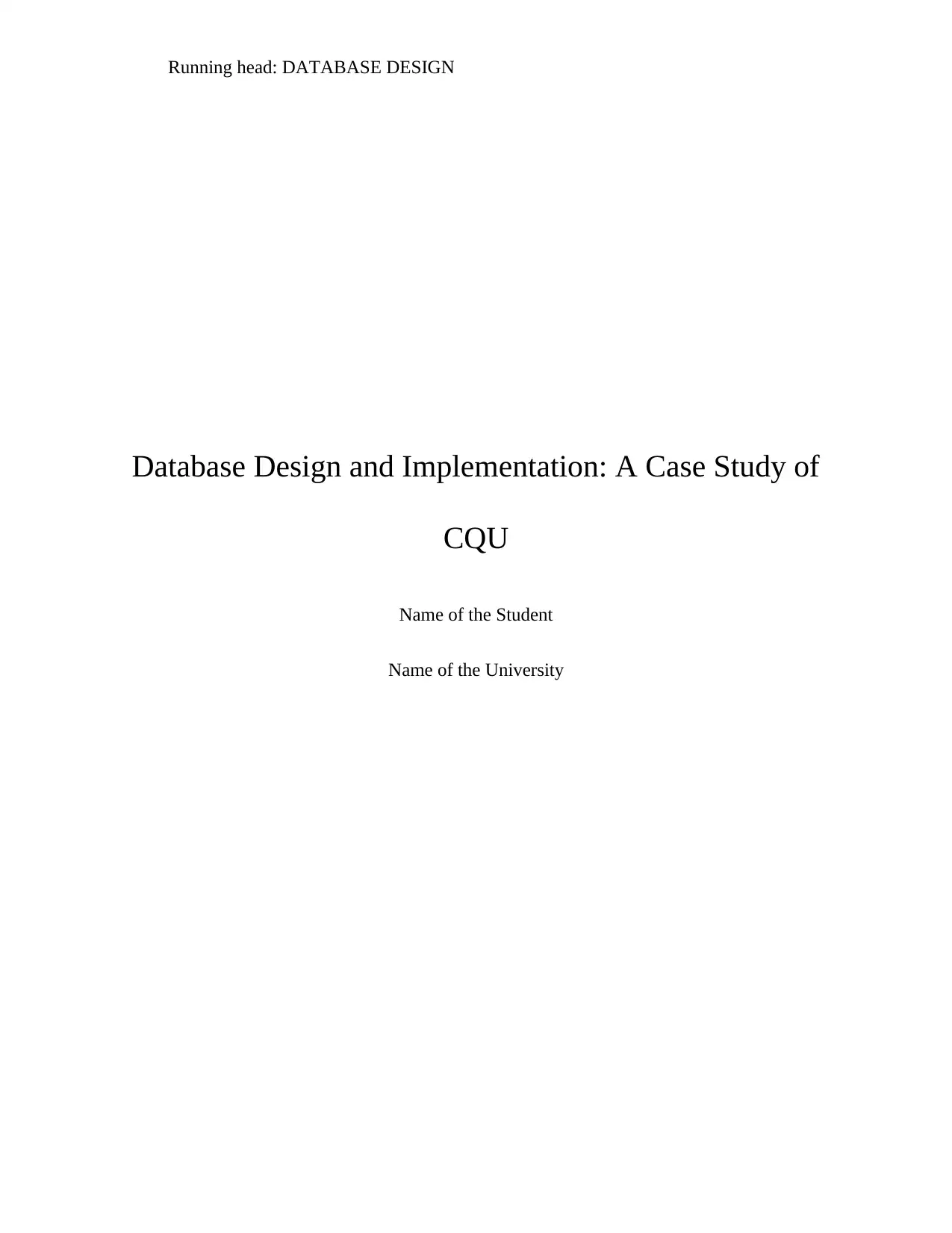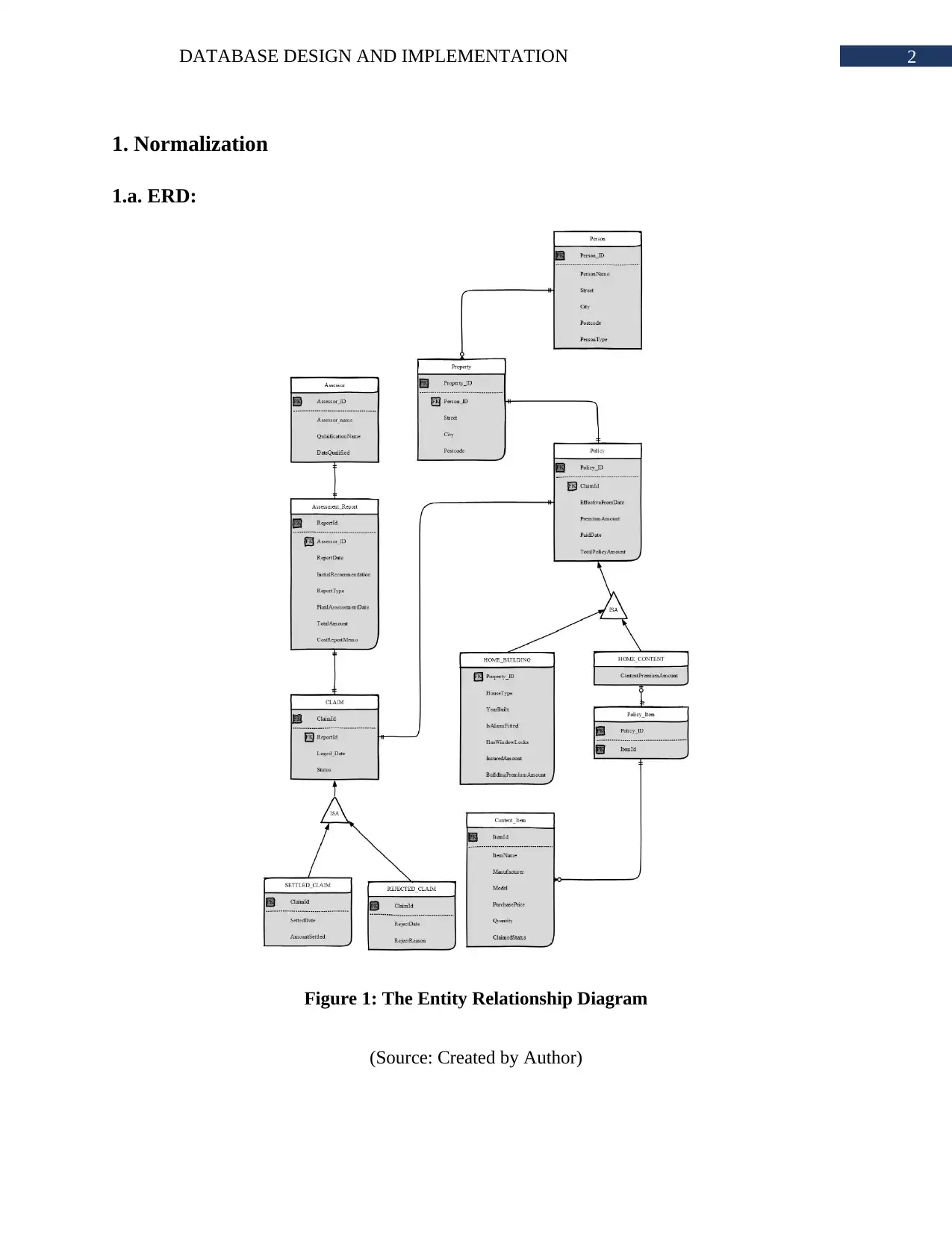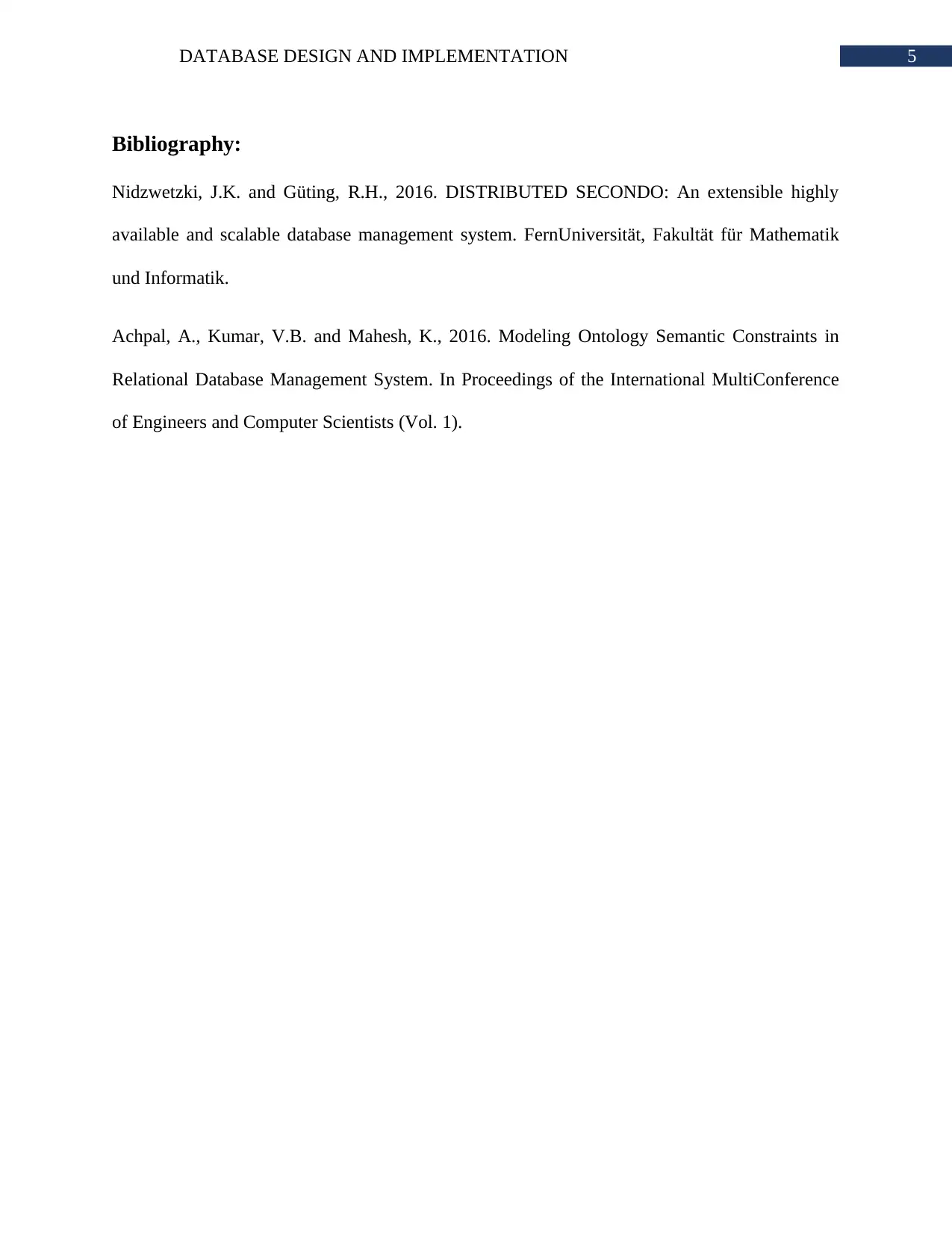Database Design and Implementation Report: CQU - Fall Semester 2024
VerifiedAdded on 2021/06/17
|6
|501
|107
Report
AI Summary
This report details the design and implementation of a database, focusing on normalization and ERDs. It includes a breakdown of the normalization process, highlighting the transition through different normal forms. The report also features an implementation section, discussing query design in Access, and the challenges faced during the process. It covers interesting aspects of the database design, such as the use of query design tools and report generation, along with discussions on complex requirements and the use of subqueries. Additionally, it includes a bibliography with relevant research papers. This report is a comprehensive overview of database design principles and practical application, offering insights into database management and development.
1 out of 6













![[object Object]](/_next/static/media/star-bottom.7253800d.svg)